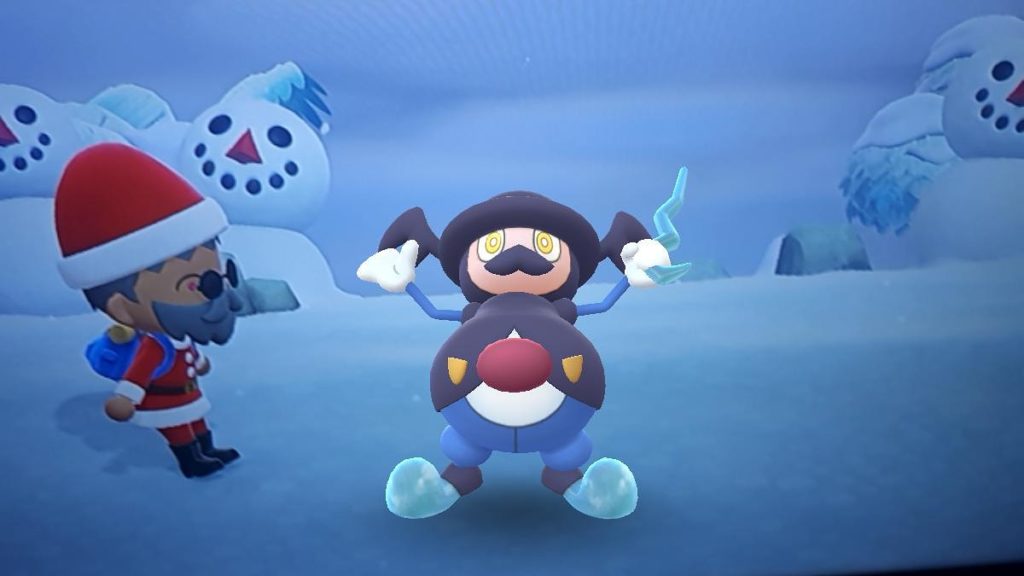
Earlier in December, I posted some Pokemon Go news that included player complaints about a recent Mr. Rime paid event. While there was a good item comparison relating it to similar previous events, much of the chatter was more emotionally based, which I wasn’t expecting from a subreddit that used to ban negativity that wasn’t supported by some data.
However, Niantic has always utilized The Silph Road’s data, so the community has some power, mostly from the researchers, but the data pooled there even from basic users are useful. While the event slammed across social media, my local community apparently embraced the event. People made it quite open that they were participating in the supposed “rip-off” event. While POGO‘s overall community may be harder than average to assess because it’s literally tied to physical and online communities around the world, I still think we can use it to discuss understanding how informed communities can affect development, particularly in relation to monetization. And I think we at MassivelyOP should try this a bit ourselves with the following poll.
I hope people will look back at this poll the next year whenever we talk about monetization. For me as a writer, this poll should make it easier for me to pick relevant stories for you guys, but it also would help when interviewing developers and PR so can note things like, say, our readers weren’t really into buying lockboxes last year.
And maybe it will serve as a reminder that developers listen to money more than opinions. We’re all guilty of this, but sometimes in our personal zeal against an issue, we fail to miss the bigger picture. We may be at odds with the majority, or our view of the majority may only be a niche of the overall community, or worse, our actions don’t match our words. That’s why I want to start out with this Mr. Rime issue in Pokemon Go and discuss how it aligns with my 2017 article on experimental monetization.
TLDR: POGO players care more about items than pokemon
I want to start with what’s the most relevant to general readers before discussing a few things specifically about the POGO general community. Throughout the Mr. Rime drama, I’d seen people complain about the Pokemon’s rarity tier (Basic), that the items are boring, and/or that it wasn’t a good monetary deal. I personally went through the cost and adjusted items to how I valued them (i.e., cosmetic poses cost $5 in general, but I only valued this one at $1), and felt I was getting at least $13 worth of content for $8. I’m not a huge fan of the pokemon (didn’t price it), and I didn’t expect much in terms of event content, but I also try to give developers money when they’re doing things I like, which I’ll discuss later.
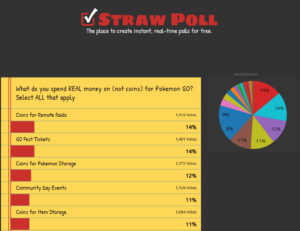
Clearly, though, I was looking at things differently than your average player. I put out one poll that asked people what they spent money on, not earned in-game currency. Once I had some idea about that, I narrowed it down to a second poll just on event tickets. I then compared the events with their contents and created a third poll about theoretical package deals. While it was the least popular poll (perhaps because it gave people the least amount of room to vent about the event), the results were that people voted up the largest discounted packages despite the pokemon’s strength, rarity, popularity, or newness. This was perhaps the only thing that was consistent while I watched the polls fluctuate.
I say this with confidence because I also included the ability for people to simply buy pokemon, something I feel The Pokemon Company and Niantic are very much against. Even when given this option, the ability to buy one of the most popular and powerful pokemon never became a top five choice, even in this theoretical purchasing situation. People were willing to pay $1 for a brand-new pokemon more than a long-standing rare pokemon, but even with moderate discounts and popular items, people chose the deep discounts even when given the option to vote for every theoretical package.
In that sense, I suspect that if Pokemon Go players are to buy an event that awards a limited amount of Pokemon (we’ll call these “Limited Pokemon Events”), they are more likely to purchase a package based on items and discounts. To me, it largely means complaints about Mr. Rime were unfounded – that it was really the lack of desirable items at a good price.
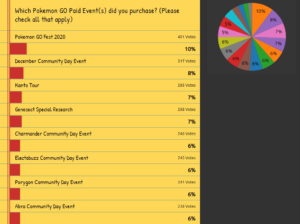
Interestingly, I also think the final poll shows that POGO players care more about things to do than gaining straight-up power. From the second poll, events that were cheap but gave access to many unique pokemon spawns (“Unlimited Pokemon Events”) seem quite popular, and that Unlimited Pokemon Events, in general, are of more interest to players. This is perhaps why Niantic has created so many of them, while the Limited Events are been so few. I think it might actually safe to say that, despite my many, many complaints about the company over the years, I’d argue that from what we’re seeing in these polls, Niantic creates content based on what players are paying for rather than what they what’s popularly said on social media, even if it’s a bit too fast. They may experiment with other forms of content and monetization, but it seems as if most of their work aligns with players’ spending habits.
Now reader, look back up at our Massively OP poll. How is this community voting with its wallet? Do you feel the games that are popular among our readers make content relevant to our community, or are we perhaps the odd-people-out?
Limitations and potential findings
If you’re not into research or POGO, feel free to skip this section. I’m going to try to keep it light, but also want to be open about a few things.
First, I didn’t do any tests to check for randomness or significance. I was looking primarily at “events” rather than people and never included an option for people who didn’t purchase anything. While the last one may have helped to determine if the third poll’s options just weren’t good enough for people to consider buying them (as it sadly had the lowest participation), I also specifically did these polls during a turbulent time when I felt people would be thinking more seriously about their purchases. I felt that by allowing an option to state that people didn’t spend any money on the game, it would give people a protest platform and cloud the data. More on this later, but it does mean the final poll’s results are from a rather small pool.
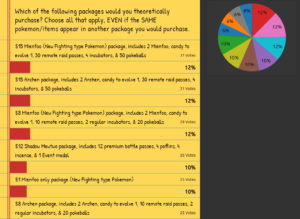
The theoretical packages were made specifically for sales salience. I wanted people to have a strong sense about the package differences. I made packages that were cheap and only included a Pokemon to test if people actually were interested in buying Pokemon only; I made deeply discounted packages on popular items to see if people would choose those no matter which pokemon was included; and I made mid-range packages with both deeply discounted “quality” items and separate packages that awarded decently discounted “popular” items, both based on the second poll. I also wanted to include a range of prices to see how much that would affect things, as people had complained about the price in general.
Once I had an idea about the contents of packages, I knew I had to pair them with specific pokemon to test whether or not people care about the items in general or the pokemon themselves. I wanted to look at power, popularity, rarity, and newness. I realized early on that too many options could cloud the data0 and that I could perhaps kill a few birds with one stone by using Shadow Mewtwo, a powerful, rare, and popular pokemon. I figured, if Mewtwo packages took most of the top positions, I could do a further study to see which of those was the most important.
However, look at the Community Day Event sales in poll two. Now compare it to Google’s 2020 Favorite Pokemon Poll results. The most popular pokemon did not necessarily do better in terms of sales. Heck, Genesect’s more expensive event beat the Charmander event, and Charmander’s line is both more popular and had a cheaper event, plus is arguably more powerful and useful.
This is why the other two pokemon I chose needed to be off the list but also relevant in some way. I wanted something with at least two stages, similar to the Galar Mime/Rime event, as it’s new and – at least for now – rare. It’s also not very good.
Archen is a pokemon I’ve seen many players complain about being too rare, and even as a top trade choice in a few discussions. That made it an easy choice when looking for a rare but useless “dex filler.” Unlike Mewtwo, Archen needs candy to evolve, so it’s not so much a “one and done” collectible, especially as Niantic’s turned the buddy system more into its solution to the Mega Evolution problem.
The second pokemon needed to be something unreleased but also not useful. Mienfoo/Mienshao fit this, as it’s one of many unreleased Gen 5 pokemon, but it’s also not particularly useful or powerful even though it’s something occasionally brought up, similar to Mr. Mime’s situation. Fighting-types do tend to be more useful in PvP, especially Great League (arguably the most popular league), but after looking through several discussions, I felt that it would be the safest bet.
I distributed the polls across various social media platforms (i.e., Twitter and Reddit), groups (such as on Discord), and even global communities (i.e., posted during European mornings, used Japanese hashtags). Again, if this were a peer-reviewed study, I would have tracked everyone and their countries/platforms plus had the polls available in multiple languages, but I was largely doing this on my own, with minimal help (poll creation and testing advice).
I also wanted to make sure I played the event, both for fun but also to get an idea of the participation from players who may not normally use social media. As many gyms changed hands at a higher than average rate, with a variety of unique players, and often had a Mr. Mime/Rime and/or use of the mime based pose, community participation was at least high enough that an uninformed player would have to notice there was an event occurring.
I thought that given the community complaints about the Pokemon’s rarity, strength, and price of the event, the mid-range packages of popular items would be at the top, followed by the ability to simply buy cheap pokemon. Clearly, though, I was wrong. While Mienfoo’s solo purchase ended up as the fifth-highest pick as of the time of this writing, I think it’s pretty clear to say that most people don’t just want to buy pokemon; at minimum, they just want items.
However, again looking at previous polls, I see Unlimited Pokemon Events are more popular than their limited counterparts when items aren’t the deciding factor, especially if the event can be played from anywhere. Go Fest 2020 was hugely popular, but the Safari Zones, which largely feature rare pokemon plus a regional ‘mon one would normally need to travel abroad for, didn’t sell well at all. From an outside perspective, those always seemed like Go Fest-lite, and a few seemed not tot sell out nearly as quickly as Go Fest. If Niantic doesn’t want to release new pokemon en masse via paid events, that’s its choice. However, I do think future “big” events, like Go Fest, could sell more if there’s an at-home version. I’m sure Niantic makes money on their real-world locations from local businesses and so forth, but I assume it could also create differences within those locations, such as greatly reducing stardust and increasing special trade limits so that visitors can be encouraged to trade more with new people.
Money talks
Hopefully now we’ve all looked at an example of how player opinions, especially on social media, don’t necessarily match the spending habits, and perhaps we’ve have seen that our own genre-based community has different expectations than a game-specific community.
This is important because especially these days people need to remember that games aren’t truly free. No, most publishers don’t “need” more money, but money signals do need to be sent when you like what a company does. Don’t like lockboxes? Don’t buy them. Think a bundle is too much? Pass on it. Think the company is garbage? Stop making purchases.
But here’s the thing: If you never buy anything, and you brag about it, that sends a different signal. The signal you send is that the game/IP isn’t worth money, and that encourages game shutdowns or more aggressive monetization. Here’s a quote I used from a previous monetization article from an old Nintendo stockholders meeting on mobile games:
Kimishima: We have 3 games (Miitomo/FE/Mario) with different methods. Looking into what works. Mario had 150 million downloads but under 10% monetize. This isn’t bad. Mario downloaded in 200+ countries, some where it’s not officially available. Fire Emblem download count is 1/10th of Mario but has more revenue. All depends on IP; each has different needs.
Now, I know Mr. Kimishima said it’s not bad, but it’s clearly not good either. Super Mario Run now seems only to get updates that boost rewards, rather than content. That’s Nintendo’s flagship mascot in a game on life-support, and arguably with a popular genre. The problem? Mobile users didn’t want to pay a few bucks to unlock game content, but they will buy items.
The other game Kimishima mentioned, Miitomo, was a social game about creation and expression. It was almost like a friendly Facebook for people who felt it was easier to share things with a game-based avatar than simply posting it for everyone to google and judge. It was cute, fun, inventive, friendly, and maintained by a big company that tends to experiment and have deep pockets. And it was shut down because it couldn’t make enough money. Monetization was based on cosmetics at first, including a kind of pachinko-game to get special clothing so it was still gambley but utilized some skill, but clearly it wasn’t enough.
Fire Emblem Heroes offered a good experience for F2P players, especially considering that it’s basically a gachapon game, but then it added a subscription on top of that. And don’t even get me started on Mario Kart Tour’s aggressive monetization, which launched with subs, gachapon, bundles, and gross game design that forced competitive players to essentially choose between gambling or buying $20+ package just for the chance to be competitive. There’s a reason I never wrote about it despite playing it for several months.
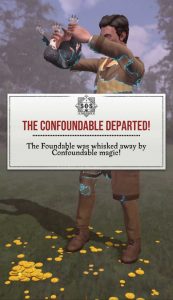 As I said in my 2017 monetization article, I think Nintendo’s business tactics are still quite relevant, given how much it’s experimented in the field with various IPs, genres, and monetization strategies. For a company that was among the last to jump into mobile gaming, it’s done some of the worst monetization out there in mobile games at the end of 2020.
As I said in my 2017 monetization article, I think Nintendo’s business tactics are still quite relevant, given how much it’s experimented in the field with various IPs, genres, and monetization strategies. For a company that was among the last to jump into mobile gaming, it’s done some of the worst monetization out there in mobile games at the end of 2020.
And I don’t blame it. “Vote with your wallet” doesn’t just mean “don’t buy stuff.” It means if or when you’re able to afford paying for things you like, do it. The way you spend money speaks to companies. If you don’t buy something because you disagree with it, companies listen to that, but if you don’t buy anything, you don’t count for much. We know companies gather data on their users in some scary ways, and it’s not surprising that people who pay more get some priority treatment.
However, communities are tracked too, down to specific friend circles. You don’t have to be a lone whale, but being an informed squad of squid ensures that you and your community can be heard in the one language companies really seem to speak: money.
 Massively OP’s Andrew Ross is an admitted Pokemon geek and expert ARG-watcher. Nobody knows Niantic and Nintendo like he does! His Massively on the Go column covers Pokemon Go as well as other mobile MMOs and augmented reality titles!
Massively OP’s Andrew Ross is an admitted Pokemon geek and expert ARG-watcher. Nobody knows Niantic and Nintendo like he does! His Massively on the Go column covers Pokemon Go as well as other mobile MMOs and augmented reality titles!
